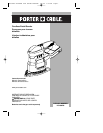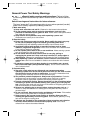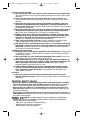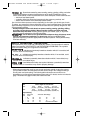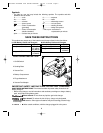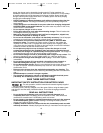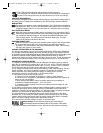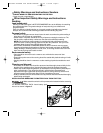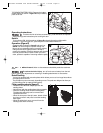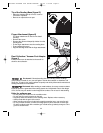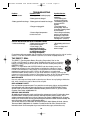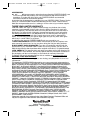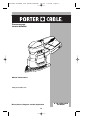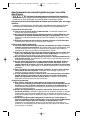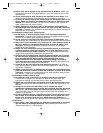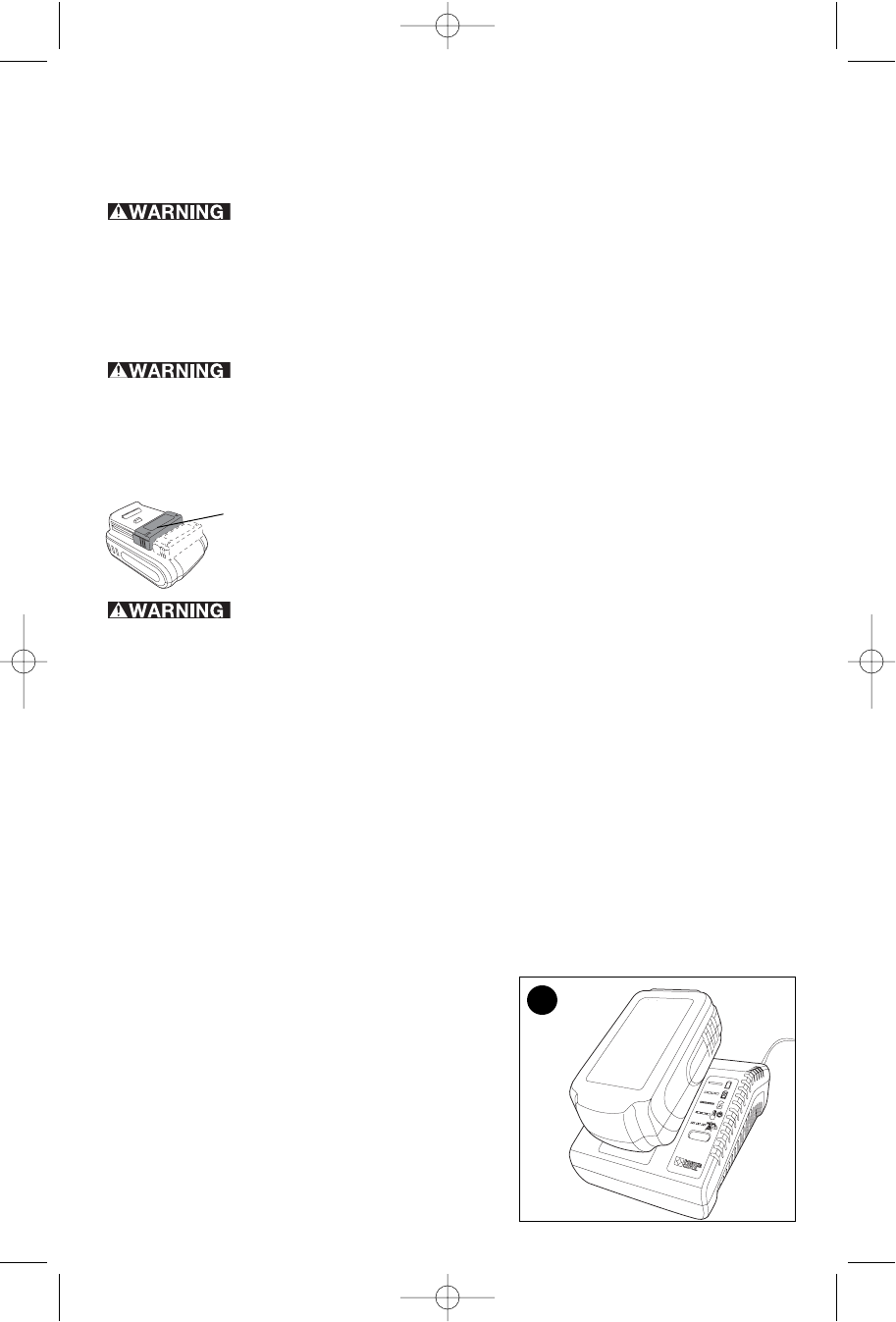
7
for 15 minutes or until irritation ceases. If medical attention is needed, the battery
electrolyte for LI-ION batteries is composed of a mixture of liquid organic carbonates
and lithium salts. For NI-Cd batteries it is a 25-35% solution of potassium hydroxide.
• Contents of opened battery cells may cause respiratory irritation. Provide fresh
air. If symptoms persists, seek medical attention.
Burn hazard. Battery liquid may be flammable if exposed to spark or
flame.
• Charge the battery packs only in PORTER-CABLE chargers.
• DO NOT splash or immerse in water or other liquids. This may cause premature
cell failure.
• Do not store or use the tool and battery pack in locations where the
temperature may reach or exceed 105°F (40˚C) (such as outside sheds or metal
buildings in summer).
Never attempt to open the battery pack for any reason. If battery pack
case is cracked or damaged, do not insert into charger. Do not crush, drop or damage
battery pack. Do not use a battery pack or charger that has received a sharp blow, been
dropped, run over or damaged in any way (i.e., pierced with a nail, hit with a hammer,
stepped on). Damaged battery packs should be returned to service center for recycling.
BATTERY CAP INFORMATION
Battery storage and carrying caps are provided for use whenever the
battery is out of the tool or charger. Remove cap before placing battery in
charger or tool.
Fire hazard. Do not store or carry battery so that metal objects can
contact exposed battery terminals. For example, do not place battery in aprons,
pockets, tool boxes, product kit boxes, drawers, etc., with loose nails, screws, keys, etc.
Transporting batteries can possibly cause fires if the battery terminals
inadvertently come in contact with conductive materials such as keys, coins, hand
tools and the like. The US Department of Transportation Hazardous Material
Regulations (HMR) actually prohibit transporting batteries in commerce or on airplanes
(i.e., packed in suitcases and carry-on luggage) UNLESS they are properly protected
from short circuits. So when transporting individual batteries, make sure that the battery
terminals are protected and well insulated from materials that could contact them and
cause a short circuit. NOTE: LI-ION batteries should not be put in checked baggage.
STORAGE RECOMMENDATIONS
1. The best storage place is one that is cool and dry away from direct sunlight and
excess heat or cold.
2. Long storage will not harm the battery pack or charger. Under proper conditions
LI-ION batteries, can be stored for 5 years or more.
CHARGING PROCEDURE
PORTER-CABLE chargers are designed to charge PORTER-CABLE battery packs in
30-60 minutes depending on the pack being charged.
1. Plug the charger into an appropriate outlet before
inserting the battery pack.
2. Insert the battery pack into the charger
(figure B).
:
:
:
Battery Cap
B
90550099 PC1800DS Crdl Sander REVISED 4/1/09 1:52 PM Page 7



